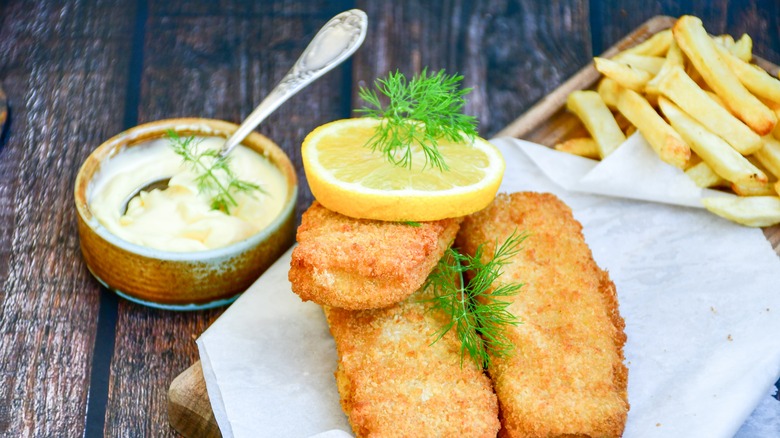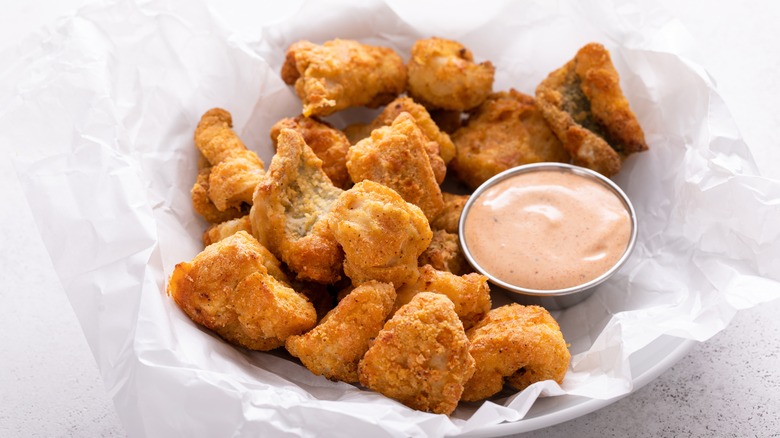What's The Difference Between French And Louisianan Remoulade Sauce?
There may not be an American regional cuisine more distinct or impressive than that of the state of Louisiana. Whether you're talking about Cajun or Creole food, there's no question the Pelican State has a lot to offer when it comes to food. And while New Orleans cuisine may be inspired, in part, by French cooking techniques, it's a cuisine all to its own. Ultimately, while it has plenty of unique dishes, this means that you're going to have a few items where there are both French and Louisiana versions.
One of these is remoulade sauce (often called just "remoulade"), a classic sauce for dipping and as a sandwich condiment. But unlike similarly-named dishes between different cuisines, this isn't a matter of one or two ingredients making the difference. There's no way to mistake a Cajun remoulade for a French one, thanks to the inclusion of more ingredients in the Southern state's version — and it's all down to the non-French influences in Louisiana cuisine.
French remoulade is simpler than the Louisiana version
Louisiana may have been a French colony once, and there are certainly plenty of French influences at play in the region, but calling Louisiana food "French" is like saying Tex-Mex is "Mexican" — it's kind of accurate, but doesn't nearly tell the whole story. New Orleans cuisine is every bit as African, Spanish, Indigenous and Caribbean-inspired as it is French (if not more so), owing to the mixed cultural history and identity of Louisiana. Remoulade, interestingly enough, is one of the most illustrative expressions of this in action.
Both types of remoulade start from the same place: With a mayonnaise base. A French remoulade is pretty simple, not getting all that wild from there, throwing in things like capers, dried cornichons (those little pickles called "gherkins" in England), and herbs, which can be any combination of classic French ingredients like parsley, tarragon, herbs de Provence, and chives. There's often an inclusion of small amounts of anchovy paste or anchovy essence, which provides some umami. That's all well and good, but Louisiana remoulade takes things a step farther when it comes to flavor.
Louisiana remoulade goes wild with spices
No one can ever accuse Louisiana cooking of being bland or leaving out the spices, and remoulade is no exception. It typically starts with the same mayonnaise base (though it can also be oil), but from there, New Orleans chefs will throw in spices like salt, paprika, cayenne, Worcestershire sauce, and chili powder. Then they add some combination of lemon juice, dark mustard (either Creole or stone ground), scallions, hot sauce, celery, and parsley. Again, you can't say Louisiana cuisine shorts you on flavor because that's a heck of a punch.
All of this also makes for the easiest way to tell the two kinds of remoulade apart without tasting them: Owing to all the spice inclusions (particularly the cayenne, paprika, and chili powder), the Louisiana version is usually darker, with a pinkish hue. So next time you're in a restaurant and order a remoulade, it should be easy to spot the difference.


